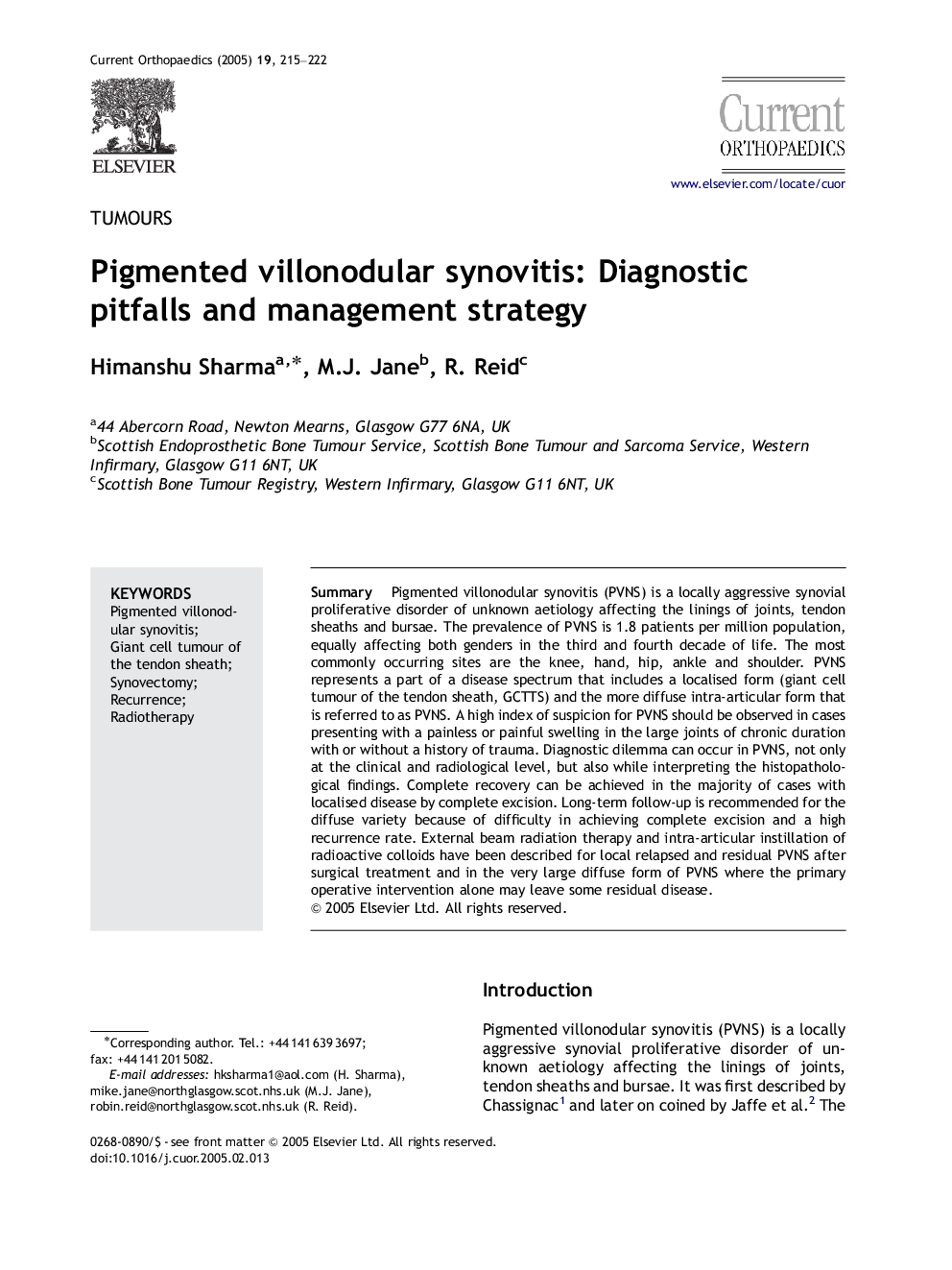| Article ID | Journal | Published Year | Pages | File Type |
|---|---|---|---|---|
| 9351478 | Current Orthopaedics | 2005 | 8 Pages |
Abstract
Pigmented villonodular synovitis (PVNS) is a locally aggressive synovial proliferative disorder of unknown aetiology affecting the linings of joints, tendon sheaths and bursae. The prevalence of PVNS is 1.8 patients per million population, equally affecting both genders in the third and fourth decade of life. The most commonly occurring sites are the knee, hand, hip, ankle and shoulder. PVNS represents a part of a disease spectrum that includes a localised form (giant cell tumour of the tendon sheath, GCTTS) and the more diffuse intra-articular form that is referred to as PVNS. A high index of suspicion for PVNS should be observed in cases presenting with a painless or painful swelling in the large joints of chronic duration with or without a history of trauma. Diagnostic dilemma can occur in PVNS, not only at the clinical and radiological level, but also while interpreting the histopathological findings. Complete recovery can be achieved in the majority of cases with localised disease by complete excision. Long-term follow-up is recommended for the diffuse variety because of difficulty in achieving complete excision and a high recurrence rate. External beam radiation therapy and intra-articular instillation of radioactive colloids have been described for local relapsed and residual PVNS after surgical treatment and in the very large diffuse form of PVNS where the primary operative intervention alone may leave some residual disease.
Related Topics
Health Sciences
Medicine and Dentistry
Orthopedics, Sports Medicine and Rehabilitation
Authors
Himanshu Sharma, M.J. Jane, R. Reid,
